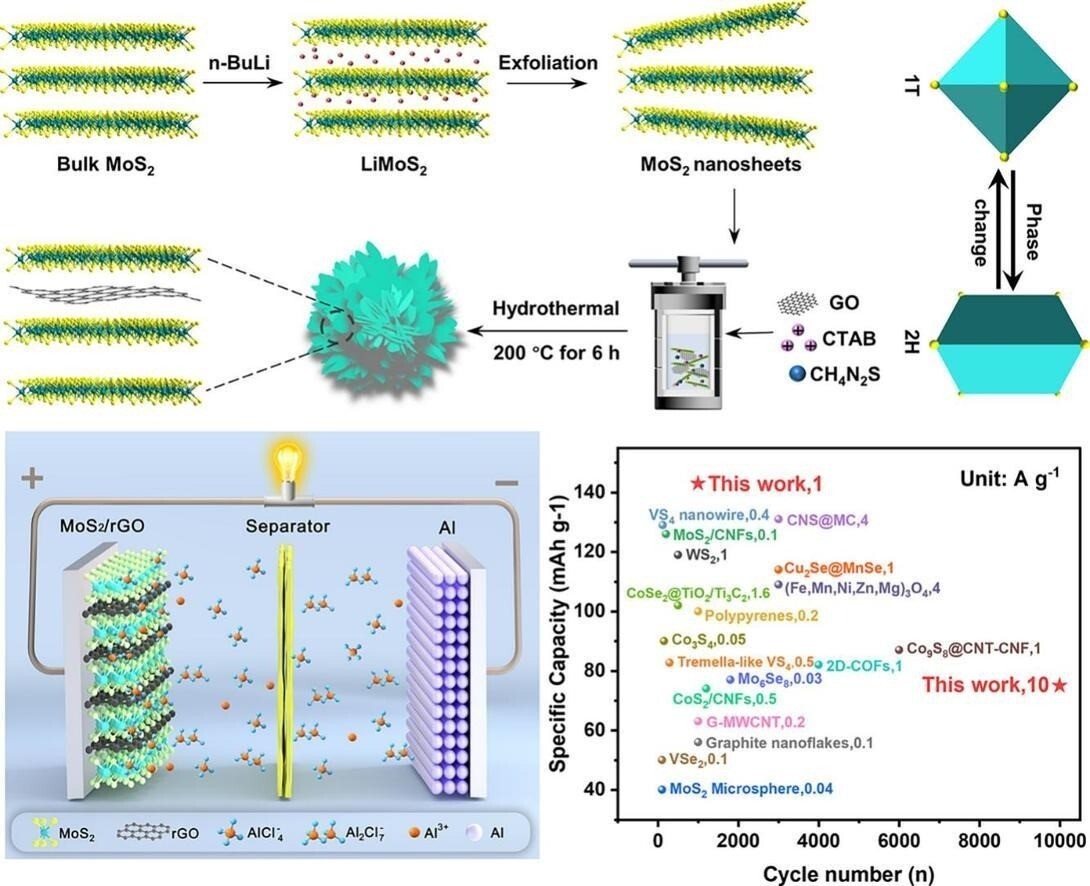

With the rising demand for electric vehicles and electronic devices, the development of high-capacity, fast-charging, and cost-effective rechargeable batteries has become increasingly urgent. Aluminium-ion batteries (AIBs) have emerged as a promising candidate thanks to aluminium's abundant reserves, high theoretical capacity, and excellent safety profile. However, their practical capacity remains limited, primarily due to the shortcomings of current cathode materials.

This is where Researchers from China's Jiangnan University and Dalian University of Technology came into the spotlight. The team developed innovative MoS₂/rGO nanoflower cathodes for aluminium-ion batteries (AIBs). While AIBs hold significant promise due to aluminium's abundance, high theoretical capacity, and strong safety profile, their real-world performance is often hindered by cathode limitations.
To address this, the team employed a hydrothermal method to construct reduced graphene oxide-intercalated MoS₂ nanoflowers. This strategy successfully induced a phase transition in MoS₂ from the semiconducting 2H phase to the metallic 1T phase, expanding the interlayer spacing from 0.62 nm to 1.03 nm. These changes effectively enhanced electrochemical kinetics and capacity by mitigating issues associated with poor conductivity and tightly packed interlayers.
The resulting aluminium-ion batteries demonstrated a high specific capacity of up to 143 mAh g⁻¹ and an impressive Coulombic efficiency of 96.9 per cent at 1 A g⁻¹. They maintained 95.6 per cent of their original capacity after 1,000 charge-discharge cycles. Remarkably, even at an ultrahigh current density of 10 A g⁻¹, the batteries retained 75 mAh g⁻¹ over 10,000 cycles. This innovative approach paves the way for designing advanced cathode architectures for next-generation AIBs, offering fresh insights for the development of other high-performance battery systems.
Also Read: Mahindra shifts to aluminium for lightweight powertrain & battery innovations
Image Source: ScienceDirect website
Responses








